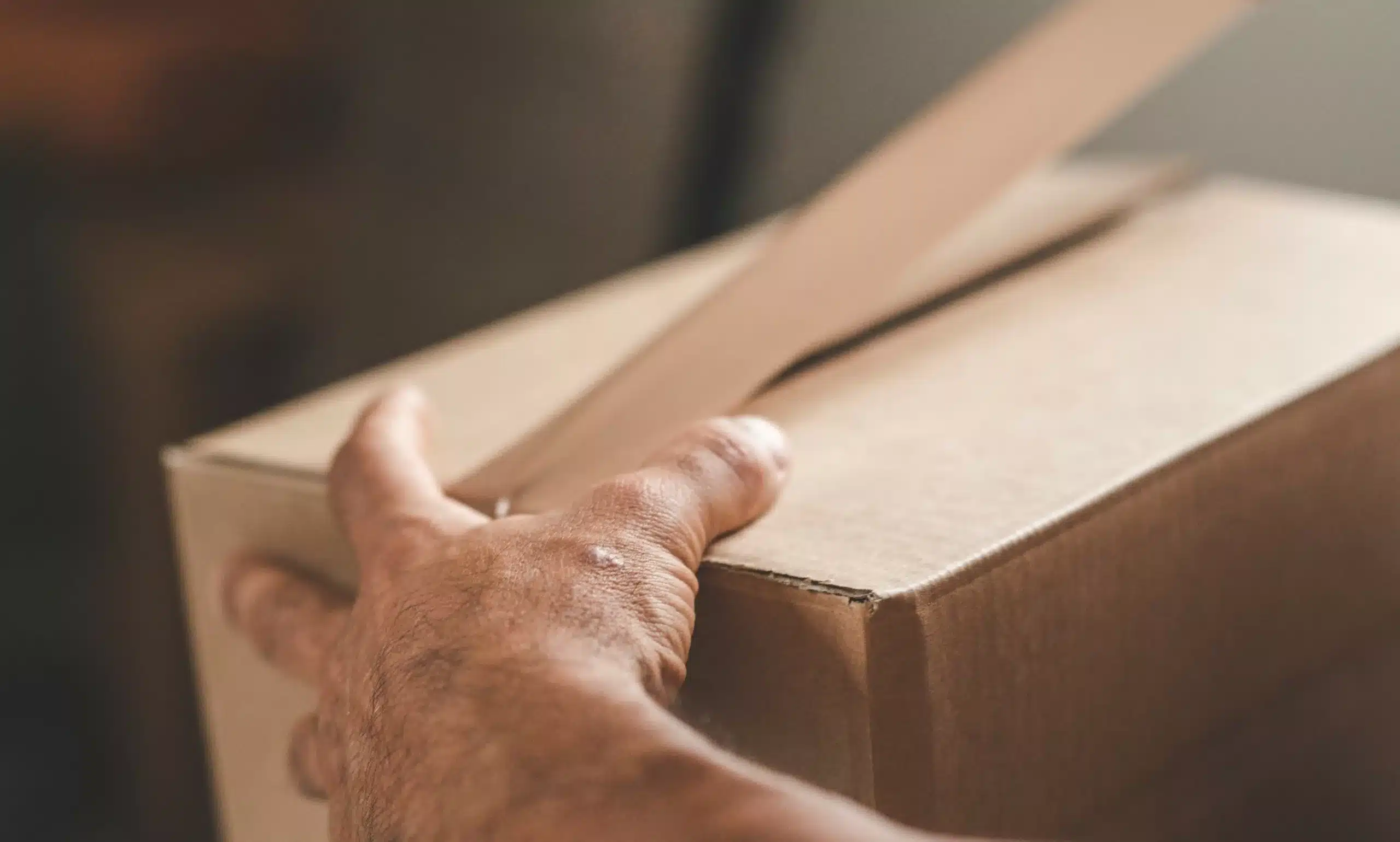A guide to packing tape and adhesive tape

It’s claimed that the average British household has over 200 cardboard boxes delivered every year, and the majority of them will have been sealed with tape.
Being one of the staples of any warehouse, it’ll be hard to find an operation that doesn’t use tape at all in their packing process. But how much do we really know about it?
This blog will be exploring what packing tape is made from, the different types and methods to apply! We’ll cover common questions about recyclability and help you decide the best tape for your business.
- 1.
- 2.
- 3.

What is packing tape made from?
Generally, packing tape is composed of 2 to 3 main parts. Here’s a short explanation of each:
- The backing or carrier – this the material it’s made from. In the case of packing tape, the backing is often made from polypropylene, vinyl or kraft paper. Other more technical types might have a backing or carrier made from other materials such as crepe paper or even cloth.
- The adhesive – this is the stuff that makes it stick. There are several different adhesives including acrylic.
- The liner – when it comes to packing tape, a liner is sometimes used on some pressure sensitive or double-sided tapes. It stops layers of the backing material from sticking together.
What are the different adhesive types used on packing tape?
Most packing tape will use one of these four adhesives:
- Acrylic – You can get water-based or solvent-based acrylic adhesives, it has great bonding properties. Water based will be cheaper than solvent based adhesives.
- Solvent – if you are looking for long term strength, solvent based adhesives could be great for you, as it can be stuck down with low pressure.
- Hot Melt – when heated, this synthetic resin becomes tacky which creates this adhesive. It is one of the strongest types and should be applied with an applicator.
- Water Activated – this is a starch-based adhesive used on gummed paper tape. It requires water to activate it and it solidifies as it dries.
Different kinds of tape dispensers & ways to apply
- Hand – If you’re packing more than one box, you can use a handheld dispenser; it saves time by never losing the end! Designed for use with most self-adhesive tapes, handheld dispensers often have a built-in brake that adjust easily to accommodate varying unwinding speeds. It is particularly suitable for use with polypropylene and quick release style.
- Manual – Manual Dispensers are reliable and user-friendly, it has fifteen manually set lengths and is ideal for use where there is no convenient electrical power supply. Perfect for light to medium usage and is compatible with either reinforced or non-reinforced water-activated tapes.
- Auto dispensers – Moistens, cuts, and delivers pre-programmed lengths of gummed paper tape. Ideal for medium to high usage

Adhesive Tape Products
We offer a wide range of packing tape products; include those made with polypropylene and PVC, as well as self-adhesive and gummed paper solutions. All our tapes are available in a variety of widths and roll lengths, as well as different adhesive types, such as acrylic, hotmelt and solvent. We can provide dispensing equipment too, making application a breeze.
Below you will see a small range of what we have to offer, if you are looking for a specific style or material, please contact us today!
- Gummed Paper Tapes – biodegradable and recyclable; providing an environmentally friendly alternative for standard packaging. These hardwearing tapes are suitable for sealing all parcels and cartons.
- Self-Adhesive Paper Tape – A recyclable alternative to plastic based. Using a Hot Melt adhesive and adhering directly to the box, it can be applied using a standard tape gun. We offer this product in either a matt or gloss finish, to enhance the look of your shipments.
- Standard Polypropylene Tapes – Manufactured using 25-micron BOPP polypropylene, in buff or clear shiny-finish, standard tapes come either with solvent-based adhesives, for long-term sealing, or hot melt adhesives, recognised for their versatile application, superior tensile strength and ultimate fixing power. These standard tapes are hard to tear and therefore require a hand dispenser for cutting.
- Reinforced Filament Tapes – Strong tape that is typically used for bundling heavy products, and sealing and reinforcing heavy boxes and container boxes. As it’s reinforced with glass fibre filaments, a packing knife or scissors is required to cut reinforced filament tape, offering tamper-evident qualities, as any cut will be easily noticed.

Common questions about packing tape
Below we have listed some popular questions people have around packing tape. If you have any more queries that are not listed, our team of experts will be happy to help you.
Can packing tape be recycled?
Whether packing tape can be recycled depends on the type you are using. Most types, such as polypropylene and PVC are not easily recyclable in the UK.
If you are looking for an eco-friendly option, both polyester adhesive (PET) and paper-based tapes can be recycled. Paper options come in either a self-adhesive or gummed format.
In theory, paper tape may be recycled as part of the paper recycling process; however, UK Recycling facilities have been developed with mechanical processes that separate it from paper and card. The paper products can then be recycled, while the plastic alternatives are usually incinerated for energy recovery.
Water activated tape is by far the most “recycle-friendly” option, as the bond it forms with cardboard means it essentially becomes “part of the box”.
Can I have tape printed with my logo?
Yes, we can offer a wide range of custom print options to meet various requirements. Adding a logo or message to your tape is a great, relatively inexpensive way to customise your packaging quickly and easily.
We can also supply a range of standard printed options such as fragile tape, as well as floor marking and masking tapes.
Which packing tape is best?
The kind of packing tape you need will depend on the product that you’re sealing.
For a recommendation tailored to your packing processes and product, contact us to speak with one of our packaging experts who will help you determine the best packing tape for your requirements. If you would any other packaging advice as well, why not contact us today!
